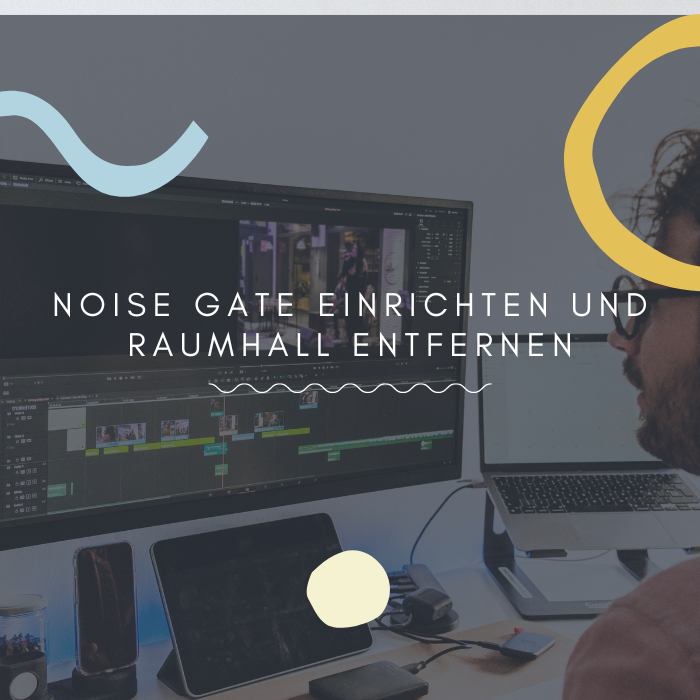In an audio transmission, there is always unwanted noise, whether as background noise, unintentionally self-produced or foreign noise. You can use a noise gate to block out such noise in live performances and audio recordings. A noise gate helps e.g. B. to remove room reverberation and to prevent unwanted background noise such as echo. In this article you can read how to set up a noise gate and what options you have for subsequently removing room reverberation in a recording.
How does a noise gate work?
A noise gate is basically a acoustic door, which blocks certain audio signals and thus suppresses background noise. For example, room reverberation leads to reverberation or echo, especially in the case of speech and singing. This means that shortly after the actual audio signal, the same audio signal appears in a weakened form with a time delay. The result: problems understanding voice recordings. When recording music, the vocals may not come through properly.
A noise gate now distinguishes which audio signals are “correct” and which are noise. This noise is selected and not transmitted or hidden. To set up a noise gate, you set certain thresholds for each audio track, which audio signals are allowed to pass and which are not. Since the background noise and the room reverberation are usually weaker than the actual audio signal, this is usually not that difficult.
In your noise gate settings, first define the Threshold, up to which a noise is minimized or suppressed. This should always be above the background noise. Continue to put attack and release times determined, i.e. how fast the noise gate is opened and closed. In the case of voice recordings, it is advisable not to set these times too “hard” so that the words can fade in and out gently. Longer attack and release times make the noise gate less noticeable, but also less effective. Short times are very effective, but can lead to unnatural-sounding recordings.
All-rounder for audio: cut, edit, transcribe
Get your free Audiate trial today! Cut your audio files, transcribe voice recordings and create professional sound files with just a few clicks.
Download Free Trial
Remove noise and room reverberation in audio recordings
Even before recording, you can do a lot for a good sound recording. Have you already made your recording and find out during audio editing that it contains echo, noise or other interference? Then you can use effects in audio programs such as Audiate to remove or reduce unwanted background noise such as room reverberation.
Also, since the noise gate only works in the pauses, you can’t use it alone to perfect your recording. The best way to start editing your audio recording is with the effect Remove Noise in Audiate. This removes unwanted noises such as hissing, humming or street noise and gives you a clearer voice recording.
- Click on the icon at the bottom right of the editing window Properties and then click the plus sign. Choose the effect Remove Noise out of.
- Then adjust the effect to your liking.
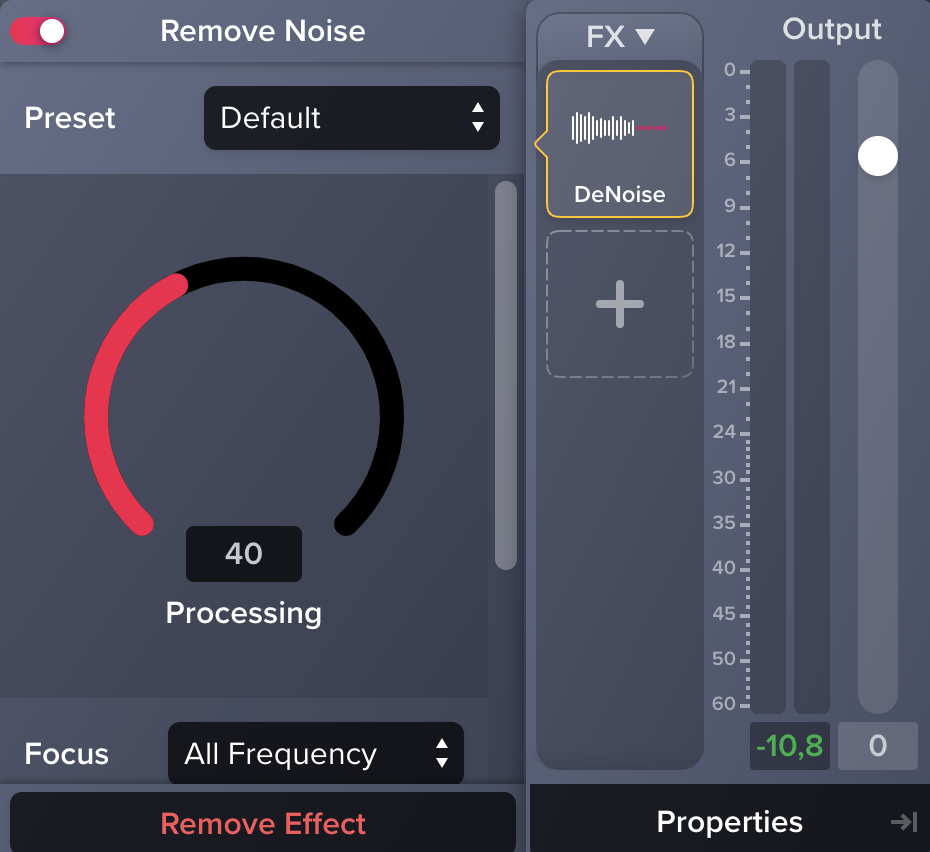
- You can also choose presets for removing fan noise or hum.
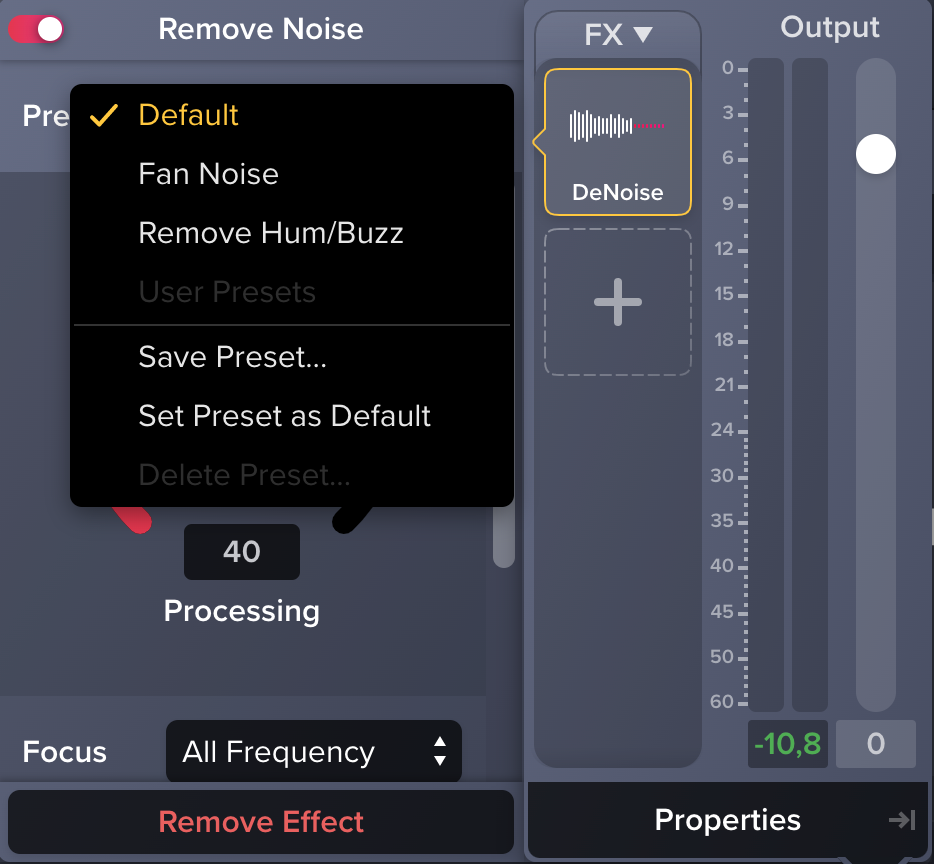
Then use the effect to remove echo or room reverberation Remove Reverb in Audiate.
- Open the Propertiesclick the plus sign and select Remove Reverb out of.
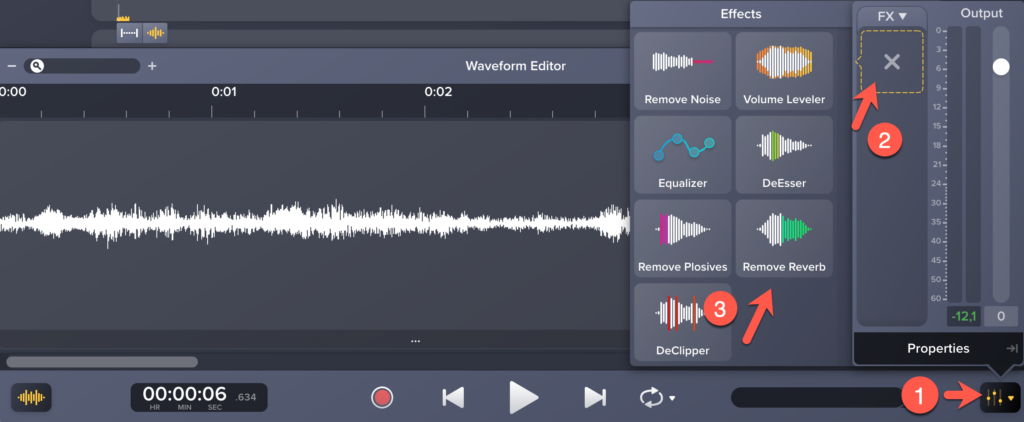
- Then adjust the effect to your liking.
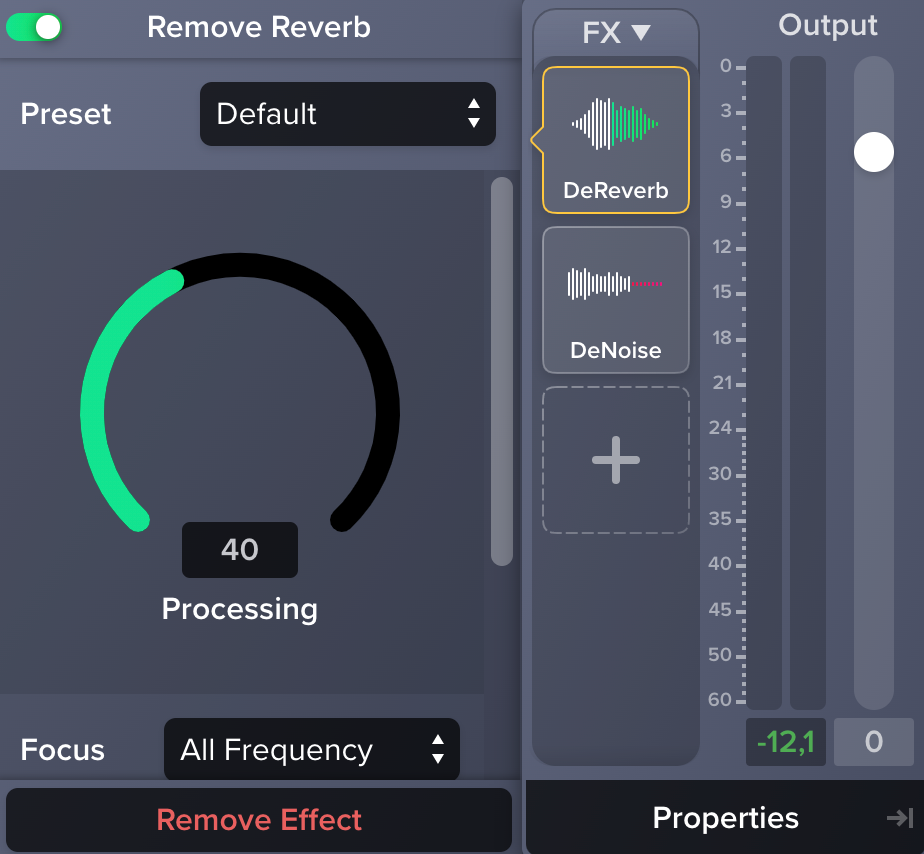
- You can also choose presets for removing room reverberation in a small office or in a large room.
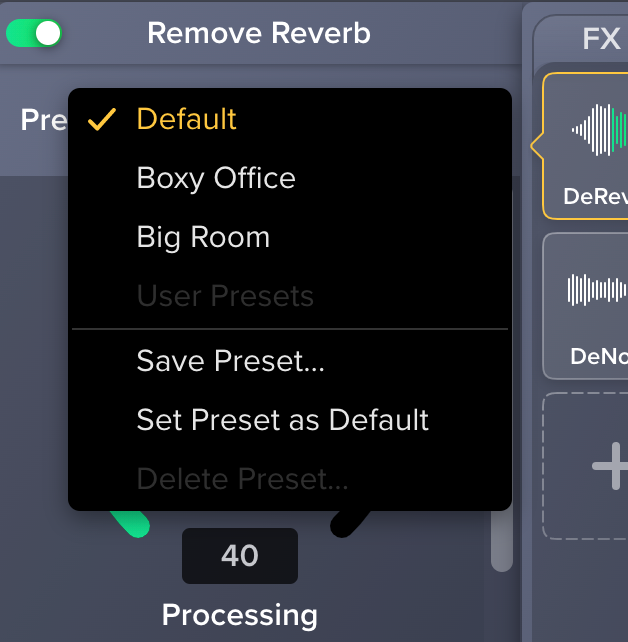
Also read our tutorials on noise removal and reverb removal and learn more about effects like equalizer and de-clipper.
Simple text-based audio editing with Audiate
Convert your voice recordings to text. Delete unwanted words, shorten or add pauses and easily correct slips of the tongue in the text.
Download Free Trial
